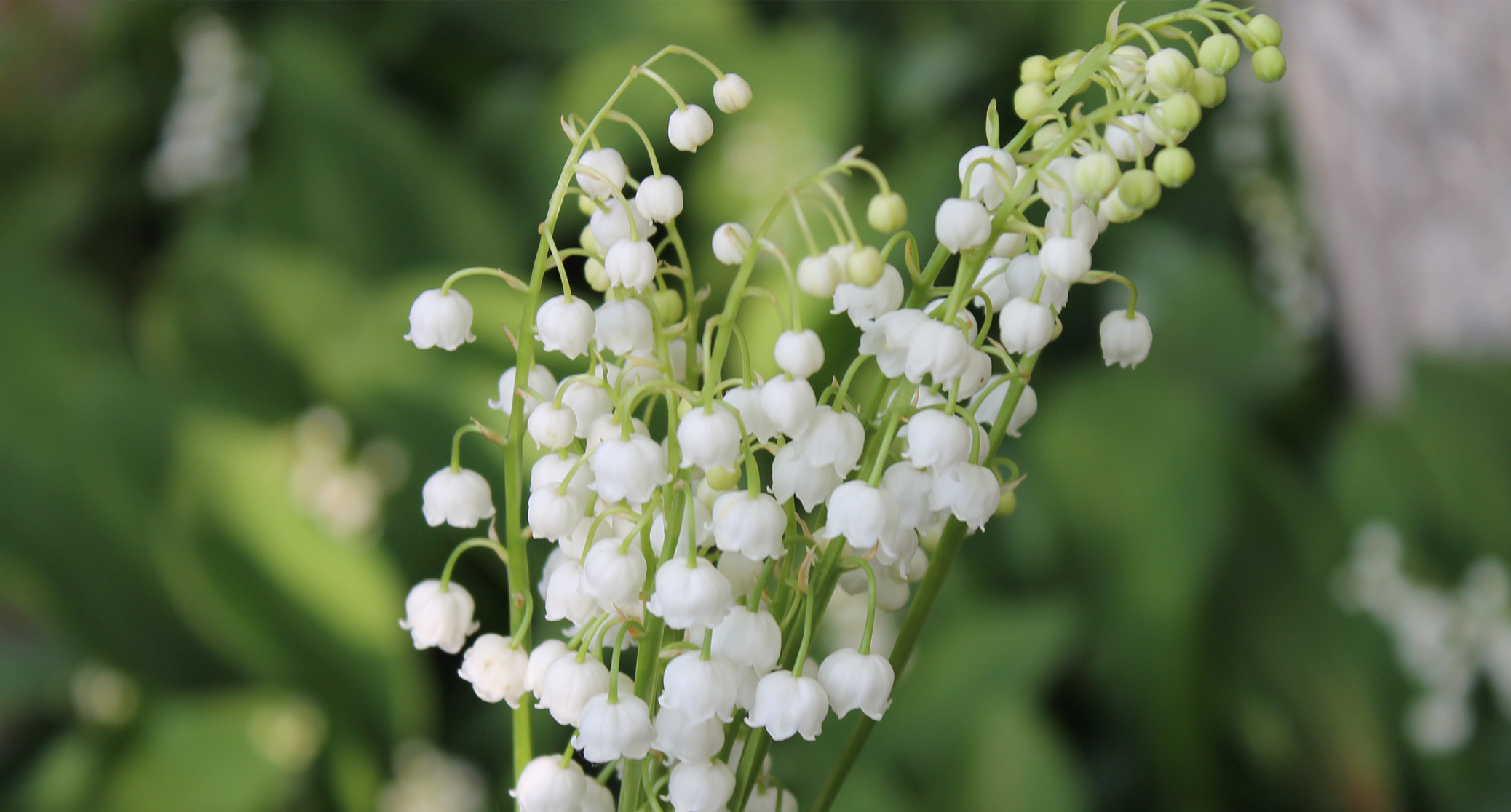Despite its popularity, the lily of the valley has rarely been used for its perfume. Isn't this strange since, as we have read, its name is directly linked to the sweetness of its smell? Not really if you consider how lethal it can be, for lily of the valley can cause death. These innocent bells we offer to each other every year contain three toxins, convallatoxin, convallarin and convallamarin, which depending on their dosage can excite the heart or make it stop.
This fact was well known to the Ancients who, since Antiquity, prescribed to drink lily of the valley wine to "strengthen the heart" or cause "early childbirth". Nevertheless, the flower will live through the Middle Ages without being used for its perfume, as heavier fragrances were favored at the time, the likes of chypre powders, labdanum, pomanders of musk and civet or aromatics such as rosemary, thyme or rue to protect oneself from pestilential miasmas.
The 18th century marked lily of the valley’s return to favor, in pharmacopoeia on the one hand, since at that time more and more medical treatises were being translated from Greek or Latin to French; and in perfumery on the other hand as the creation of the Queen of Hungary’s Water paved way for lighter and more floral perfumes. However, as extraction techniques evolved, perfumers faced an insurmountable obstacle: lily of the valley is a mute flower.
In perfumery, a mute flower is one which essence loses its smell once distilled. To overcome this issue, perfumers first resorted to the enfleurage technique, which consists of placing layering flowers on a sheet of fat until it is saturated with fragrant oils. However, as this method required a lot of time, flowers and manpower, lily of the valley enfleurage rarely made it out of royal perfumers and most herbalists would more often create lily of the valley accords from scratch.
The 19th century was a turning point in the history of lily of the valley. More and more perfumeries opened in London and Paris, the bourgeoisie became more and more perfumed, lily of the valley reconstitutions spread their sillage but were soon met with puritan mores which dictated that "well-behaved women should not wear any perfume" Thus, lily of the valley made its way into soaps and detergents before it did in actual colognes.
In 1836, thanks to the progress of organic chemistry, lily of the valley’s molecules were being studied...but in vain. The flower was still mute. These experiments started a race to synthesis that was all the more pressing as rumors spread that people died, asphyxiated by muguet’s overwhelmingly heady scent.
As early as 1861, Louis Claye advised his readers to "not to adorn their boudoirs with lily of the valley". Two years later the press relayed the story of a young girl who had succumbed to the toxic vapors of a bouquet that had been left in her room overnight, and ten years after this event, the rumor was so firmly anchored in people's minds that Zola used the same method to kill Albine, the heroine of one of his novels.
In 1889, the synthesis of terpineol -a mixture of isomers naturally occurring in pine trees or lavender and with a characteristic lily of the valley fragrance- rekindled the spark. In 1905, a German laboratory created hydroxycitronellal from citronella. This key molecule in lily of the valley accords, made famous by Diorissimo in 1956, made its debut in 1912 with Quelques Fleurs, which was only released in 1912. As the trend grew and chemists perfected their skills, a plethora of new molecules reproducing the elusive scent of lily of the valley appeared on the perfumer’s palette: cyclamen aldehyde in 1912, then Lilial in 1956 -from which Bourgeonal was derived- Lyral in 1958, Dupical and finally Florhydral in 1988.

These six ingredients would be used in perfumes ranging from Quelques Fleurs d'Houbigant to White Musk by the Body Shop, including the muguets of Coty, of Chéramy, Anaïs Anaïs, Je Reviens, l'Air du Temps, Rive Gauche or Charlie, but being considered too allergenic or even potentially carcinogenic in the case of Lilial, they will soon be banned from use in favour of new molecules, such as LilyBelle from Symrise, or Mahonial and Nympheal from Givaudan.
As of today, there is still no way to extract anything fragrant from the muguet, no way to reveal its magic, and although we now have a host of molecules and blends to reconstitute our lily of the valley’s characteristic smell, none is more effective than the nose of a perfumer and their creativity.
At Histoires de Parfums, we have decided to work it in transparency in This is not a blue bottle 1/.2 to which hydroxycitronellal and cyclamen aldehyde give a floral, airy and ozonic start, their greenness stuck to that an Ivy Leaf accord sprinkled with milky aldehydes for a composition that borrows from the past but fails not to be modern, in which terpineol still diffuses, some 140 years after its discovery, its powdery light in shades of cream and mauve and white










